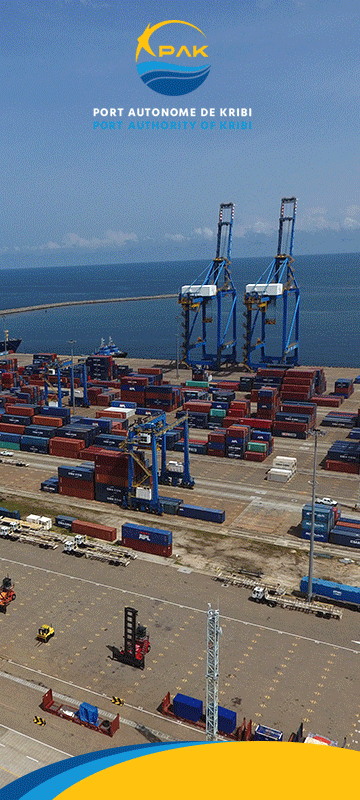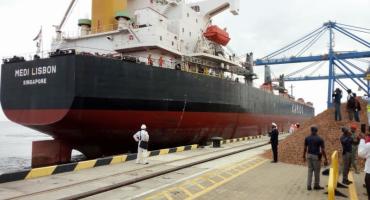2019 at the Port of Kribi was marked by an increase in vessel berths, 331 against 295 in 2018. In 2020, forecasting bodes very well, and the first highlight was the berth of the supercargo “Safmarine Chachai” of the Danish MAERSK, the world’s leading shipowner, last 10 February. 250 metres long, the vessel unloaded 1410 containers at the Port of Kribi. This huge volume in a single ship call is a first for the young Port of Kribi. This is a significant evidence of the specific attractiveness of the Port of Kribi, in the context of fierce competition in which ports are operating along the Atlantic side of the Gulf of Guinea.
The volume of goods unloaded by MAERSK supercargo equally confirms the quality and reliability of the facilities of the Kribi Deep-sea Port: 16 metres depth, to accommodate the biggest vessels. It is true that Kribi has already accommodated bigger vessels, of 335 metres especially. However, this time, more containers have been unloaded and the handling reached an exceptional rate of 50 movements per hour. The current performance of the Kribi Deep-sea Port aims to be up to Cameroon’s growth ambitions, in the Central African subregion, and the huge investments made for its construction. Such performance will surely contribute in diversifying economies and reducing over-costs that are currently crippling the region.
Reinforcing its position as future maritime hub
Since major ports in the world developed based on the hub and spoke model, with hubs ready to accommodate the biggest vessels and to dispatch traffic to smaller ports, the Port of Kribi made the choice from its inception, to assert its position as natural hub. A position that became necessary due to the need to make economies of scale and to the size of vessels, as Kribi is one of the few ports in the subregion that can accommodate new generation vessels like New Panamax.
It is obvious that with the Port of Kribi, Cameroon has a major argument to maintain its role as leader in Central Africa. Its central position on the Atlantic side of the Gulf of Guinea, its dynamic hinterland, and its capacity to accommodate big-size vessels make the country a natural candidate for the position of hub in Central Africa.



